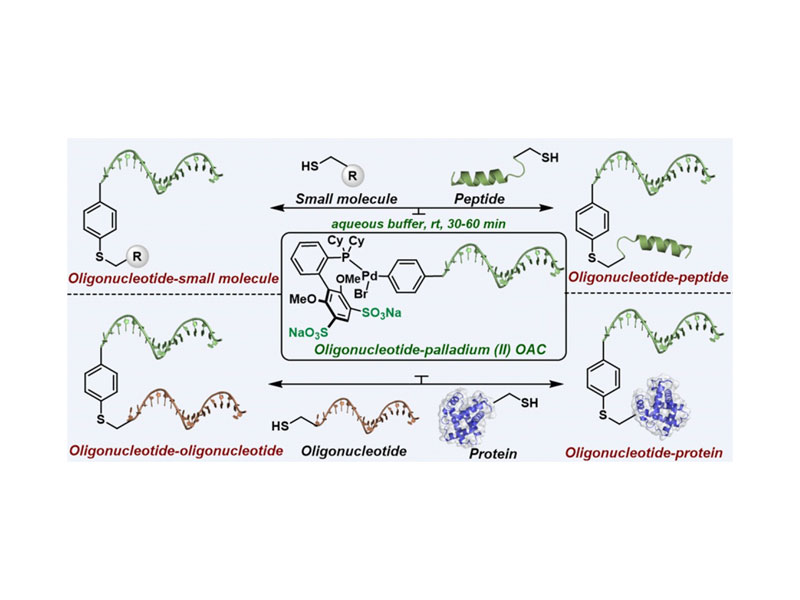
Oligonucleotide Bioconjugation with Bifunctional Palladium Reagents

Oligonucleotide Bioconjugation with Bifunctional Palladium Reagents
First published: 17 March 2021 https://doi.org/10.1002/anie.202103180
Dr. Muhammad Jbara, Jacob Rodriguez, Dr. Heemal H. Dhanjee, Dr. Andrei Loas, Prof. Dr. Stephen L. Buchwald, Prof. Dr. Bradley L. Pentelute
Abstract
Organometallic reagents enable practical strategies for bioconjugation. Innovations in the design of water-soluble ligands and the enhancement of reaction rates have allowed for chemoselective cross-coupling reactions of peptides and proteins to be carried out in water. There are currently no organometallic-based methods for oligonucleotide bioconjugation to other biomolecules. Here we report bifunctional palladium(II)-oxidative addition complexes (OACs) as reagents for high-yielding oligonucleotide bioconjugation reactions. These bifunctional OACs react chemoselectively with amine-modified oligonucleotides to generate the first isolable, bench stable oligonucleotide-palladium(II) OACs. These complexes undergo site-selective C-S arylation with a broad range of native thiol-containing biomolecules at low micromolar concentrations in under one hour. This approach provided oligonucleotide-peptide, oligonucleotide-protein, oligonucleotide-small molecule, and oligonucleotide-oligonucleotide conjugates in >80 % yield and afforded conjugation of multiple copies of oligonucleotides onto a monoclonal antibody.



